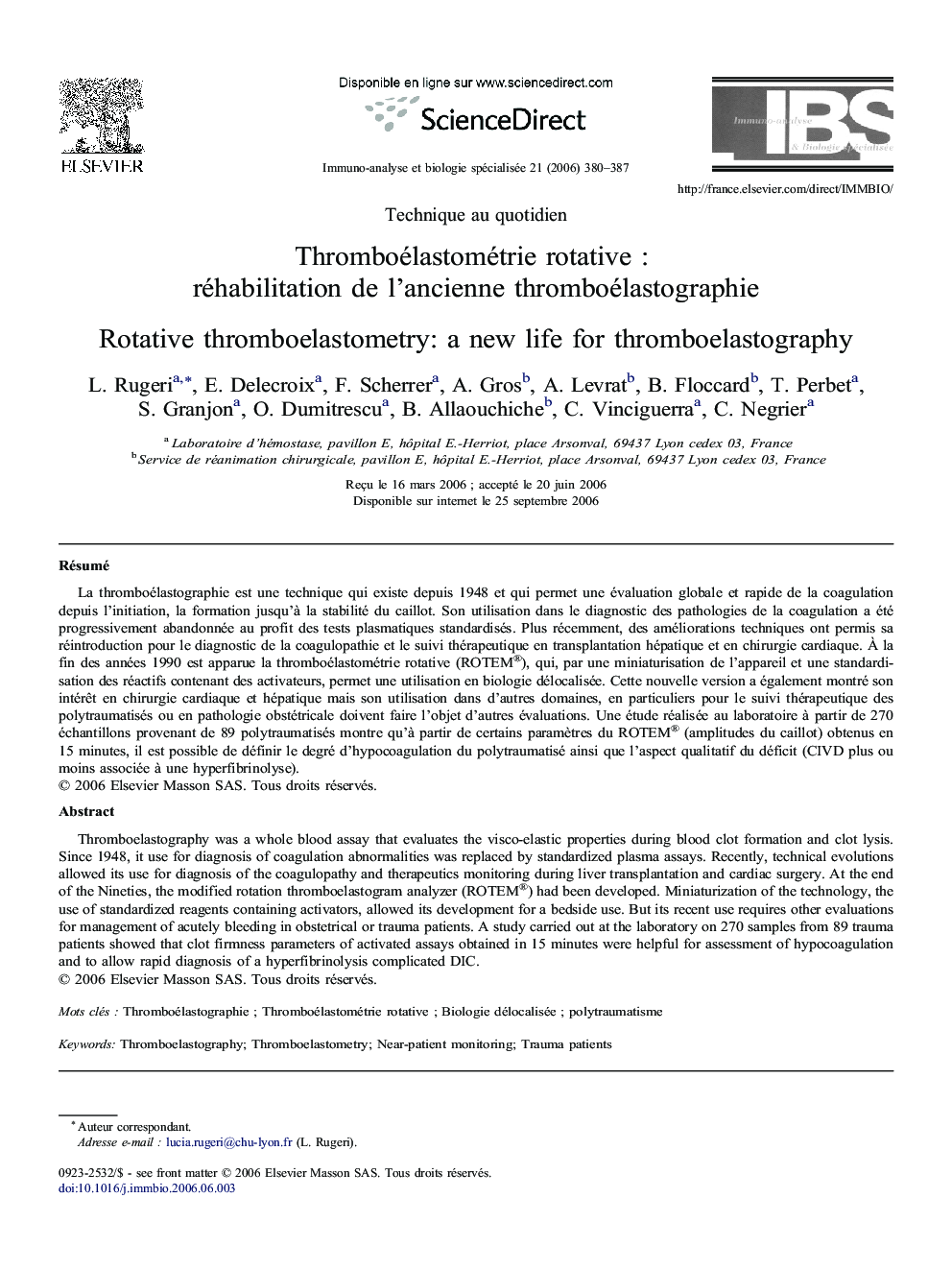| Article ID | Journal | Published Year | Pages | File Type |
|---|---|---|---|---|
| 8471917 | Immuno-analyse & Biologie Spécialisée | 2006 | 8 Pages |
Abstract
Thromboelastography was a whole blood assay that evaluates the visco-elastic properties during blood clot formation and clot lysis. Since 1948, it use for diagnosis of coagulation abnormalities was replaced by standardized plasma assays. Recently, technical evolutions allowed its use for diagnosis of the coagulopathy and therapeutics monitoring during liver transplantation and cardiac surgery. At the end of the Nineties, the modified rotation thromboelastogram analyzer (ROTEM®) had been developed. Miniaturization of the technology, the use of standardized reagents containing activators, allowed its development for a bedside use. But its recent use requires other evaluations for management of acutely bleeding in obstetrical or trauma patients. A study carried out at the laboratory on 270 samples from 89 trauma patients showed that clot firmness parameters of activated assays obtained in 15Â minutes were helpful for assessment of hypocoagulation and to allow rapid diagnosis of a hyperfibrinolysis complicated DIC.
Related Topics
Life Sciences
Biochemistry, Genetics and Molecular Biology
Cell Biology
Authors
L. Rugeri, E. Delecroix, F. Scherrer, A. Gros, A. Levrat, B. Floccard, T. Perbet, S. Granjon, O. Dumitrescu, B. Allaouchiche, C. Vinciguerra, C. Negrier,
